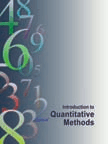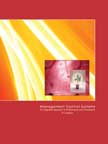Introduction to Quantitative Methods
 |
Details
Textbook:
Pages : 395;
Paperback;
210 X 275 mm approx.
Workbook:
Pages :
276; Paperback;
210 X 275 mm approx, Sample Applied Theory Questions
Sample Multiple Choice Questions (Online Quiz)
Pricing
Textbook Price: Rs. 900;
Workbook Price: Rs. 700;
Available only in INDIA
Detail Table of Contents
Click below to view
HTML
Measurement Concepts, Attitude Measurement, and Sampling Design : Chapter 14
SUMMARY:
While conducting research on business-related issues, a researcher has to initially define what is to be measured, how it will be measured and also the concept that needs to be measured. Measurement scales are normally categorized into four types, namely, nominal scale, ordinal scale, interval scale, and ratio scale. The five major criteria for analyzing the goodness of measurement are reliability, validity, sensitivity, generalizability and relevance.
|
|
A sample is the segment of the population that is selected for investigation. Researchers can use probability or non-probability methods for sampling. Probability sampling involves random selection to ensure that each unit in the population has a known chance of being selected into the sample. In non-probability sampling the units in the population have an unequal chance of being selected into the sample. Probability methods include simple random, systematic, stratified random, and cluster sampling. Non-probability sampling includes convenient, quota, judgment, and snowball sampling techniques. The steps involved in the process of sampling are - defining the target population, specifying the sampling unit, selection of the sampling method, determination of sample size, specifying the sampling plan, and executing the sampling plan.
Although sampling provides a fair idea of the characteristics of the entire population, it suffers from certain. In general, researchers face two errors - random sampling errors and non-sampling errors. Random sampling error is the difference between the sample results and the results of a census conducted by identical procedures. Non-sampling errors are the errors caused by factors other than sampling and include non-observation errors and measurement errors.



